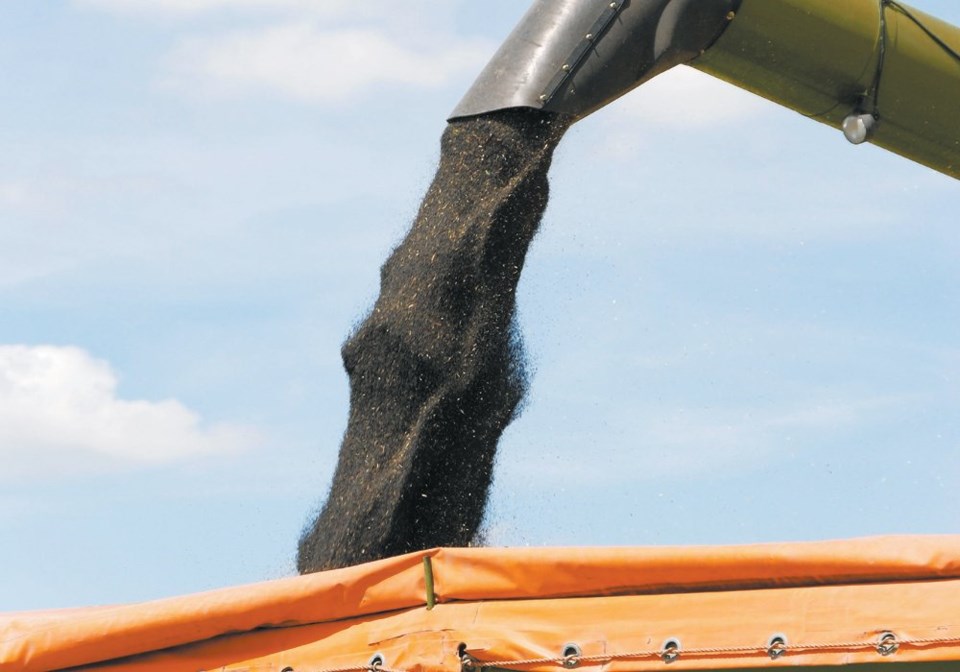WESTERN PRODUCER — Canola crush margins are leaving one analyst at a loss for words.
“They have soared up to levels that are just beyond anybody’s description,” said Ken Ball, commodities futures adviser with PI Financial Corp.
“I have run out of adjectives to describe them.”
His crush index hit $325 per tonne yesterday, representing a gross margin of $7.37 per bushel.
“In the U.S., a $1.50 per bu. margin for beans is considered fantasyland,” he said.
You might expect to see those kinds of “staggering” margins if Canadian farmers were harvesting a bumper crop of 22 million tonnes of canola or something like that, but that is not the case.
Statistics Canada forecasts 19.1 million tonnes. Ball thinks it will be sub-19 million tonnes because most farmers he talks to say yields are coming in a few bushels per acre lower than anticipated.
“The balancing factor is that Australia seems to be on their way to another whopper canola crop,” he said.
The Australian government forecasts 6.6 million tonnes of production, down two percent from last year’s record-shattering crop.
“The chatter that I’m hearing from Australia is this one might be 7.5 million tonnes,” said Ball.
That could keep a lid on canola prices.
On the other hand, it is only a matter of time before the crush margin pendulum swings, which could mean rising canola values.
The formula for calculating the margin essentially compares soybean oil futures prices to canola futures prices. Soybean oil is used as a proxy for canola oil because there is no canola oil futures market.
For the margin to shrink to a more normal level, it means that either soybean oil prices must fall or canola prices need to rise.
Ball thinks it is more likely to be the former than the latter, although soybean oil prices are showing no signs of slumping.
Canola is “dirt cheap” compared to soybean oil, despite trading in the $17 to $18 per bu. range.
“That’s a fantastic price, but it probably could be $19 or $19.50 quite easily,” he said.
“I’m not sure why that is. It’s mysteriously cheap.”
One factor supporting continued strong crush margins is that China is expected to return as a major buyer of canola oil in 2022-23, according to the U.S. Department of Agriculture.
It is forecasting that the country will buy 2.42 million tonnes of the commodity, up from 1.15 million tonnes in the crop year that just ended.
The country’s overall vegetable oil purchases were way down last year due to several factors, including COVID-related restrictions and slowing economic growth. But there was one factor that trumped all others.
“High global vegetable oil prices in 2021-22 were the key factor leading to a 40 percent decline in China’s vegetable oil imports,” stated the USDA in its Oilseeds: World Markets and Trade report.
Imports declined by more than five million tonnes compared to a year earlier, with the biggest cuts coming from palm oil (two million tonnes), rapeseed/canola oil (1.2 million tonnes) and sunflower oil (1.1 million tonnes).
Imports of sunflower oil remain sluggish due to the war in Ukraine disrupting shipments, but purchases of other vegetable oils are expected to recover this year.
China is by far the world’s leading canola oil importer. The only other buyer that comes close is the European Union, which is forecast to buy 500,000 tonnes this year.
Ball said it makes sense that China will buy a lot of canola oil because the country likely depleted its vegetable oil reserves last year and needs to replenish them.
Also, the country has strict limits on dockage on canola seed shipments, so importers are likely switching to oil. That would support Canadian crush margins.

